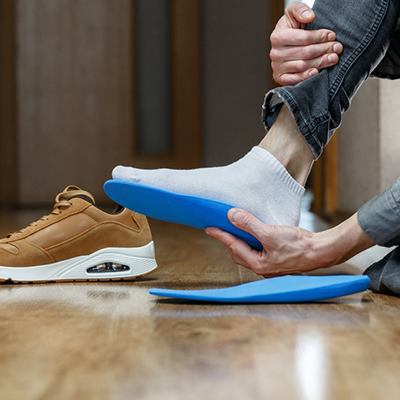Foot Care & Diabetic Solutions
Diabetic foot wear refers to a type of footwear designed specifically for individuals with diabetes. These shoes and socks are made with features that help to prevent and manage foot problems associated with diabetes, such as diabetic neuropathy, peripheral artery disease, and poor circulation. Diabetic foot wear is important for several reasons:
- Reduced risk of amputation: Diabetes can cause nerve damage, leading to numbness, tingling, and loss of feeling in the feet. This can increase the risk of unnoticed injuries, infections, and ulcers, which can lead to amputation. Diabetic foot wear helps to reduce this risk by providing extra cushioning, support, and protection.
- Prevention of pressure points: Diabetic foot wear is designed to reduce pressure points on the feet, which can cause discomfort, pain, and potentially lead to ulcers. By distributing pressure evenly and providing extra cushioning, these shoes and socks help to prevent pressure points from forming.
- Improved circulation: Poor circulation is a common complication of diabetes, which can lead to reduced blood flow to the feet. Diabetic foot wear helps to improve circulation by providing gentle compression and promoting blood flow.

- Moisture management: Diabetic foot wear often features moisture-wicking materials that help to keep the feet dry and cool. This reduces the risk of fungal and bacterial infections, which are common in individuals with diabetes.
Why should you go to Balance Prosthetics and Orthotics for your diabetic footwear needs:
- Custom Fit: Just like prosthetic and orthotic devices, diabetic footwear is often custom-made to ensure a proper fit. Balance Prosthetics and Orthotics would conduct a thorough assessment of the individual's feet, taking into account any deformities, ulcers, or areas of sensitivity.
- Pressure Redistribution: Diabetic footwear is designed to reduce pressure on certain areas of the foot, particularly areas prone to developing ulcers or sores. The shoes may feature extra padding, cushioning, or specialized insoles to distribute pressure more evenly and minimize the risk of skin breakdown.
- Roomy Toe Box: To accommodate foot deformities, swelling, or neuropathy common in diabetes, diabetic shoes typically have a spacious toe box. This helps prevent rubbing, irritation, and the formation of blisters or calluses.
- Seamless Construction: Diabetic footwear is often constructed with minimal seams and stitching to reduce friction and irritation against the skin. Smooth interior linings and soft materials help prevent abrasions and pressure points that could lead to skin damage.
- Breathable Materials: Breathable fabrics and moisture-wicking properties help keep the feet dry and comfortable, reducing the risk of fungal infections and promoting overall foot health.
- Adjustable Closures: Many diabetic shoes feature adjustable closures such as Velcro straps or laces, allowing for a customizable fit and easy donning and doffing, especially for individuals with limited dexterity or mobility.
- Education and Foot Care Tips: Balance Prosthetics and Orthotics may provide education on proper foot care practices for individuals with diabetes, including daily inspection of the feet, moisturizing, nail care, and wearing appropriate footwear at all times.
- Collaboration with Healthcare Team: They would likely work closely with the individual's healthcare team, including podiatrists, diabetes educators, and other specialists, to ensure that the footwear meets the patient's specific needs and addresses any underlying foot issues or concerns.
Newsletter
Subscribe our Newsletter to get new updates








